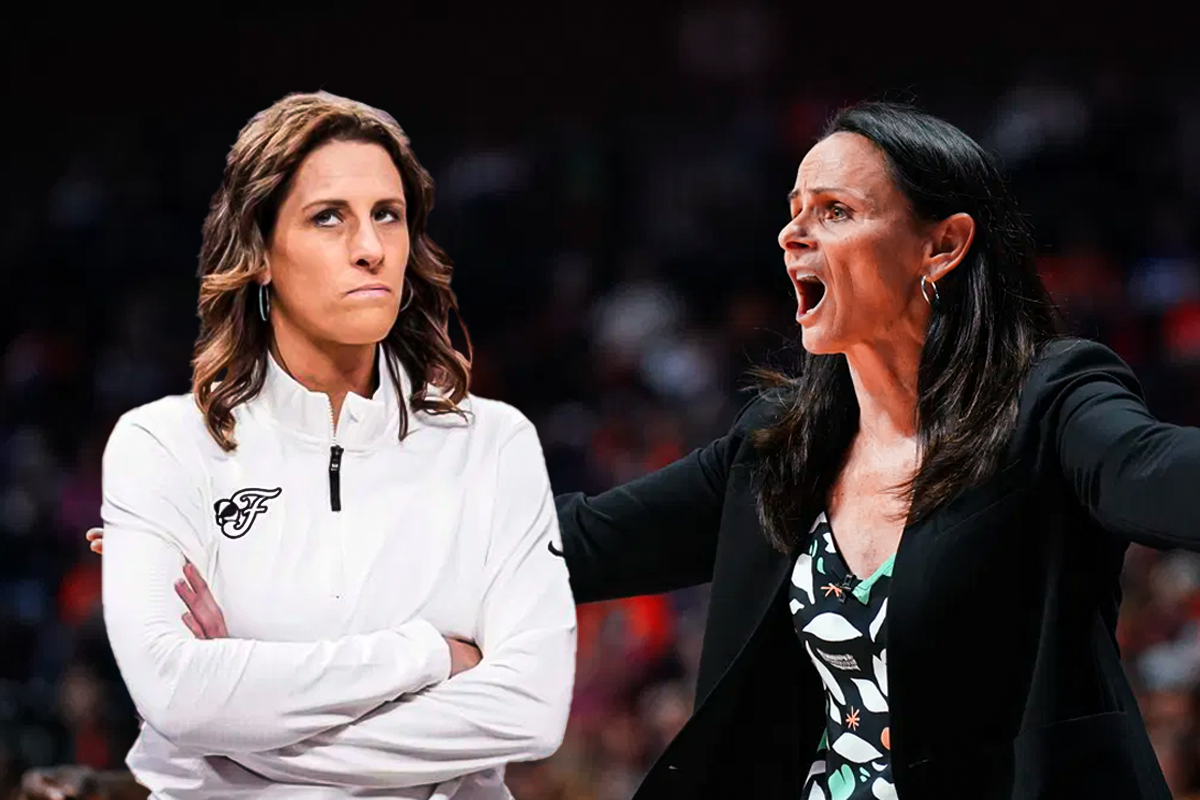
Imago
Credits : Imagn

Imago
Credits : Imagn
Running a sports league is like walking a tightrope. Move too fast, and players risk injuries. Move too slow, and tomorrow’s stars never get their chance. The WNBA is right there, booming in the spotlight, but not yet wide enough to support everyone ready to shine.
Watch What’s Trending Now!
Expansion is here. The Golden State Valkyries became the WNBA’s 13th team and unlocked 12 new roster spots this season. Toronto and Portland are set to double that next season, and by 2030, three more franchises will open up another 36. On paper, it looks like progress, but on the court, the question is whether it’s enough, because the current progress can’t keep up with the flood of talent.
Caitlin Clark, Paige Bueckers, Angel Reese, and others have inspired a surge in women chasing the WNBA dream. But with just 12 roster spots per team, the W holds only 156 seats so far. That means plenty of talent gets pushed overseas, while every spot at home feels like gold.
ADVERTISEMENT
Let’s think about the math.
In 2025, 38 rookies came in through the draft, joining 151 returning players. That’s musical chairs with way too few seats. Most years, fewer than half survive training camp. Only 15 rookies made it in 2023, 13 in 2024. This year, 20. Better—but still far from enough.
Unlike the NBA, where you’ve got 15-man rosters and a whole G League system to stash and develop talent, the W has no safety net. If you get cut, that’s it. No developmental team, no “we’ll call you up later.” One day you’re chasing your dream, the next you’re stuck on the sidelines, unemployed, and wondering what’s next.
ADVERTISEMENT
But the W has a quiet lifeline: the hardship contract.
Born out of injury crises, it is something that keeps teams afloat and players’ dreams alive. Injuries are part of sport. Sadly, yes, but in the WNBA, they don’t just leave holes in lineups, but open a door. The hardship clause lets teams sign reinforcements when they’re too short-handed to do anything. It’s a chance for players on the bubble, or fresh out of camp cuts, to step in and prove they belong.
ADVERTISEMENT
Now, these hardship contracts give waived players a second shot to prove themselves on the biggest stage. But nothing about their future is promised…
EssentiallySports’ Tracker:
- Haley Jones: Bounced between two teams this season, signed three hardship deals, and only recently landed a season-long contract. “You feel shock, you feel embarrassment,” Jones admitted. “And then it’s a lot of life you gotta figure out.”
- Julie Vanloo: skipped Belgium’s EuroBasket celebrations just so she could link up with the Golden State Valkyries—only to be waived an hour after landing. Brutal.
- Diamond DeShields: A former WNBA champion and All-Star, DeShields once defied the odds to even stay on the court after a nine-hour surgery to remove a benign tumor from her spinal cord. She was set to be one of the faces of the Connecticut Sun’s massive rebuild, only to find herself on the outside looking in.
ADVERTISEMENT
| DeShields’ face, she said, was splashed across the Mohegan Sun walls. She had just filmed promo videos with the team. Everyone around her only talked about one thing: her long-term role with the team. Then came a minor ankle sprain in training camp, and that was it. Waived! If anything, DeShields’ story is a stark reminder that the W is as cutthroat as it gets, even for proven stars. |
But despite all that, there are success stories too.
Take the Indiana Fever, for example—they made it to the playoffs with a bunch of hardship players stepping up. On the flip side, you’ve got teams like the NY Liberty who barely relied on theirs this season. So why the difference? Let’s break down both cases in detail.
ADVERTISEMENT
Polar Opposites: Comparing the Fever and the Liberty
Few teams leaned on the hardship exception in the WNBA quite like the Indiana Fever did. Here’s a look at everyone they’ve brought in under the hardship rule so far:
- Aari McDonald
- Chloe Bibby
- Odyssey Sims
- Kyra Lambert
- Shey Peddy
- Aerial Powers
- Bree Hall
ADVERTISEMENT
The Fever had to start the year with just 11 players to stay under the salary cap. Not ideal, but it’s a common move for teams trying to balance quality and depth. The problem? Injuries piled up in a way no one could have predicted.
Top Stories
NFL Announces Punishment for Shedeur Sanders Incident

Pro Suffers Disqualification at PGA Tour Q-School After Several Players Withdrew Abruptly

NFL Announces Final Punishment Decision for Patrick Mahomes Incident Against Texans

Ex-NFL GM Tore Up Antonio Brown’s Contract & Nullified Guarantees After Wild Helicopter Incident

Respect Pours In for Shaquille O’Neal, Charles Barkley After $200,000 Announcement
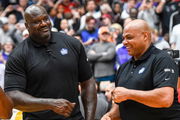
Zac Taylor Receives Unfortunate $56.5M News on Trading Away Joe Burrow Amid Bengals QB’s Frustrations

Caitlin Clark managed only 13 games. Sophie Cunningham, Sydney Colson, Aari McDonald, and now even Chloe Bibby—all ruled out for the season. How often do you see hardship players themselves going down long-term? That’s just cruel. And to make matters worse, DeWanna Bonner’s situation only added another layer of chaos.
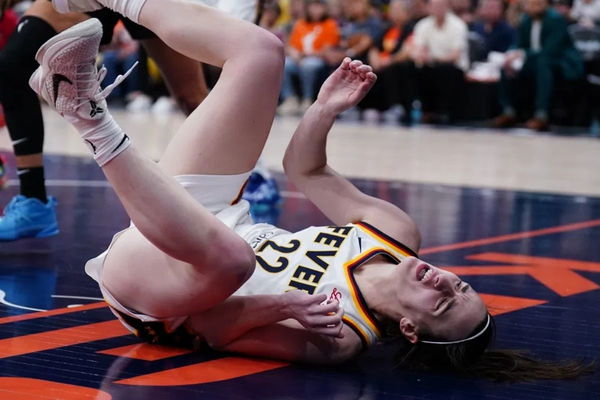
Imago
Credits: Imagn
You can see why the Fever had no choice but to dive into the hardship pool. They were constantly dipping below 10 active players, and most of the injuries were serious enough to meet the criteria for both exceptions. But despite all that chaos, the Fever are in the playoffs after achieving a franchise record 23 wins. That alone is a testament to the front office for finding the right pieces and the coaching staff, headed by coach Stephanie White, for making every new face feel at home from day one.
ADVERTISEMENT
Unlike the Fever, the Liberty chose a different path.
The New York Liberty didn’t sign any hardship exception players. Instead, they opted for a more traditional approach, bringing in Stephanie Talbot and Emma Meesseman on rest-of-season contracts while parting ways with Marquesha Davis and Jaylyn Sherrod.
ADVERTISEMENT
The Liberty has been dealing with its own string of injuries. In their August matchup against the Sparks, they suited up with just 8 players. Playing with such a thin roster has become routine for coach Sandy Brondello, especially after each member of her “big three” faced significant injuries, with Sabrina Ionescu still sidelined.
So the question remains—why haven’t they tapped into the hardship exception?
There are several reasons why that has been the case for the Liberty this season, and they are explained well by Ben Pickman on the No Offseason: The Athletic Women’s Basketball Show podcast. (words in brackets are verbatim by Ben Pickman):
1. Why has the Liberty not made many roster moves?
- Their injuries often happened suddenly—sometimes even on game day! (They’ve had have been sudden downgrades or day-of downgrades).
- That makes it hard to sign replacement players because the team doesn’t always know until the last minute who’s available (Not exactly sure what your roster is going to look like until lunchtime on the day of a game). An example by Ben Pickman (a couple weeks ago in Minneapolis, for instance, where it was up in the air about who was going to play, who was not going to play.)
2. The hardship contract wrinkle: In theory, they could apply for an emergency hardship player, but if it’s just for a single game, it puts both the team and the player in a tough spot.
3. Why it’s tough for players too: (one of the things we’re undervaluing, underrating here is how appealing that actually might be for a player)
- Imagine being signed only for one day.
- That’s your one shot, and then you’re off the roster.
- After that, league rules make you wait before you can sign again.
- So, it’s not always appealing for a player to take that “one-day chance.”
In short, the Liberty’s lack of moves isn’t about hesitation—it’s about the unpredictable timing of injuries and the awkward reality of hardship contracts that sometimes don’t benefit players as much as they seem. This just highlights what the W needs to change going forward.
Now, let’s take a step back and really understand what a hardship contract is all about and what makes some teams opt for it and some don’t.
A Complete Guide to WNBA Hardship Contracts
Under the latest CBA signed in 2020, the WNBA salary cap was laid out all the way through 2027 with a 3% annual bump built in. The minimum team salary follows the same pattern, and that’s also about as much as an individual contract can grow year to year.
For 2025, the cap for every team sat at $1,507,100 according to herhoopstats:
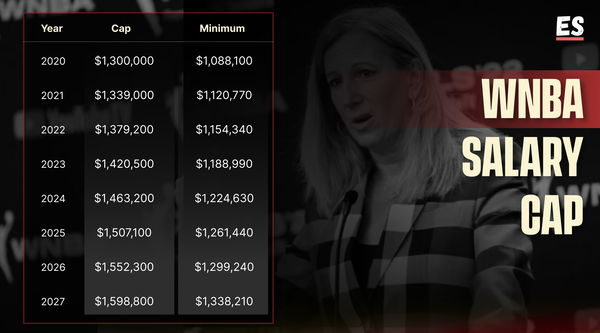
Unlike the NBA, where you’ve got multiple layers to the salary cap with apron levels and exceptions, the WNBA runs things differently. It’s a true hard cap, with barely any wiggle room. The only way a team can go above it during the regular season is if the league steps in and grants a hardship or emergency hardship exception.
A team’s total salary isn’t just about what players take home. It includes base salaries, expected time-off bonuses, trade bonuses, and even money still owed to retired players.
Then there’s the guarantee level, which sits about 7% below the cap. That’s the average salary the league promises its players. For 2025, that number is $1,401,600 per team, adding up to $16,819,200 across the league.
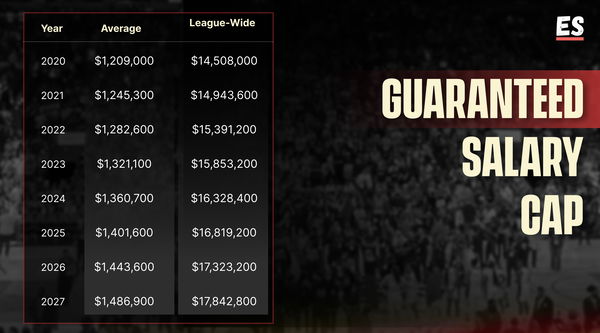
Under the 2020 CBA, every WNBA team has to keep at least 11 players on its roster. If they dip below that number, they’ve got 72 hours to bring someone in. That’s where hardship contracts come into play.
- A team becomes eligible for a basic hardship exception if at least two of its players are sidelined with injuries, illness, or other conditions
- Both players have to be out for at least three weeks
- The league doesn’t just take the team’s word for it either. A physician chosen by the league makes the final call
An emergency hardship exception kicks in when things get even tighter. If a team drops below 10 available players, the W can step in and allow them to add replacements. Unlike the regular hardship rule, this one also covers players who are away for reasons other than injury or illness.
Once granted, the team can sign enough players to get back to 10. But it comes with a catch, as we mentioned above. The moment the original players return, those replacement contracts get cut. That’s the dark side of these 7-day hardship deals—players come in, give everything, and can still be gone overnight.
Did you know?
| These contracts are signed at the league’s minimum base salary and prorated. In simple terms, the pay is worked out by taking 7 divided by the total number of days in the regular season. |
| For 2025, the minimum salary sits at $66,079. |
| It often depends on years of service, with minimum amounts set differently for players with zero to two years of experience vs. those with three or more years per The Athletic. |
| Seven-day deals have an expiration date. They can’t run through or past the end of the regular season, which means a team has to lock one in at least 8 days before the final game on the schedule. |
| A player can only ink up to three seven-day contracts with the same team in a single season… After that, the team has to make a decision: either sign them for the rest of the year or let them walk. But players are free to bounce around and sign with multiple teams in the same season. Take Haley Jones, for example. She went through three seven-day stints with the Wings, got waived each time, and then circled back to finally land a rest-of-season deal. |
Sabreena Merchant of The Athletic highlighted a wrinkle often overlooked in hardship-heavy seasons:
“The only issue there is that when you make a trade you have to end the trade below the salary cap. So, if you’ve been adding a bunch of hardships and piling up salary above the cap and you want to make a trade mid-season, then all of a sudden you’re going to have to drop a player or make some other adjustments so that the trade ends legally below the salary cap.”
We saw that play out in real time when the Aces had to part ways with Tiffany Mitchell and Elizabeth Kitley after pulling off a trade for NaLyssa Smith. The hardship contract has its flaws, but it gives a breather to those who need it. So, here’s our takeaway and what the WNBA can do to streamline it better.
EssentiallySports’ Observation
By the end of 2030, five more teams are expected to join the W. This will push the number of games in a season beyond 44, naturally increasing the risk of injuries. Consequently, the number of hardship contracts will probably rise if such conditions persist. Hardship contracts are no longer just “emergency lifelines” but have become symbols of how restrictive the WNBA’s CBA and salary cap remain. They underscore the gap between the league’s ambitions and its structural realities.
Moving forward, the WNBA should amend its rules to address the following points:
- Increase in roster size: For a long time, both teams and players have advocated for larger rosters, which are currently capped at 12. Expanding roster sizes would reduce the need to frequently rely on the hardship pool to add players at the last minute.
- Two-way contracts: It’s often more practical for a franchise to have one or two players on standby who can step in during sudden injuries or illnesses. While the NBA enjoys this flexibility thanks to its developmental league, the WNBA teams should be allowed to have a couple of contingency players on their payroll at all times.
Right now, the WNBA and WNBPA are stuck at an impasse, searching for common ground that will truly grow the game. But hardship contracts will be central to that debate, because they’re more than stopgap roster fixes. They expose the league’s structural flaws and future crossroads. To stay competitive, protect players, and keep fans invested, the CBA must rethink hardships.
No athlete should be signed for a day and uprooted the next!
Reform isn’t optional anymore, but long overdue.
ADVERTISEMENT
ADVERTISEMENT
ADVERTISEMENT

